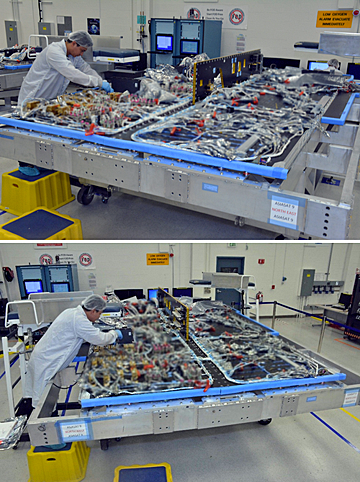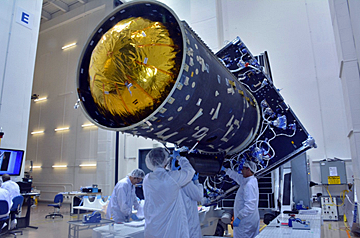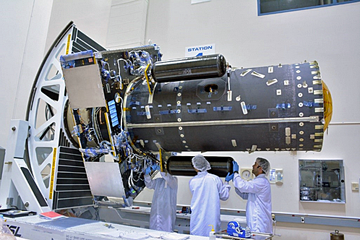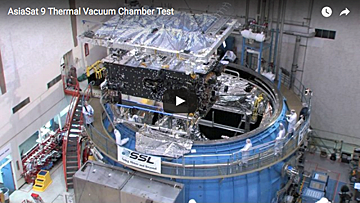There is a wealth of interesting information resident within the online blogs of the thousands of companies that comprise the satellite and communications business worlds... information that may be compelling to many Satnews.com' readers who are unaware of that content's presence. The following is from the AsiaSat online blog, with photos courtesy of SSL...
AsiaSat 9 has been proceeding smoothly as planned. Let's take a look at the manufacturing side and some other recent progress.

The Communication Panel integration is on track. Flight mounting of Payload RF units and RF switches has been started. In addition, the flight web structure has been integrated to the middle of the panel. (Photos to the right.)

Main Structure was delivered to the Propulsion lab. Bi-propellant tanks were installed inside the central cylinder. On one of the two tanks, the top dome installed is still visible, but will not be for long. (Photo above.)

Propulsion technicians are installing the second Xenon tank to the side of the central cylinder. (Photo, left.)

AsiaSat 9 enters a thermal vacuum chamber for testing, after completing a rigorous assembly and ambient temperature test program. (Photo, right.)
Once the installation of the spacecraft has been completed, the large blue lid will be secured on the chamber to create a vacuum sealed controlled environment. Different thermal environment scenarios are then simulated to test the satellite performance over expected beginning and end-of-life temperature limits (with margin).
Over the course of several weeks, AsiaSat 9 will be exposed to various temperature environments and extensive testing to verify performance of all of the satellite's subsystems.
A TVAC test, or Thermal Vacuum Chamber test, is used to demonstrate whether a spacecraft can perform within specifications over the anticipated thermal environment in the vacuum of space. The test also provides a window to assess the functional performance in a simulated space environment to confirm that the design is technically sound and workmanship is of good quality.
The AsiaSat 9 Proton Launch Vehicle Critical Design Review (CDR) was conducted in Moscow on October 13 and 14 and representatives from launch service provider (ILS and KhSC), satellite manufacturer (SSL) and AsiaSat Engineering and Consultant Team participated in a successful meeting.
AsiaSat 9 is scheduled for launch in 2017 and the ongoing efforts of the AsiaSat and SSL professionals continue to make significant progress on the build of this satellite.
Information regarding the AsiaSat 9 satellite: asiasat.com/technology/satellite-fleet/satellite-9
SSL infosite: www.sslmda.com

